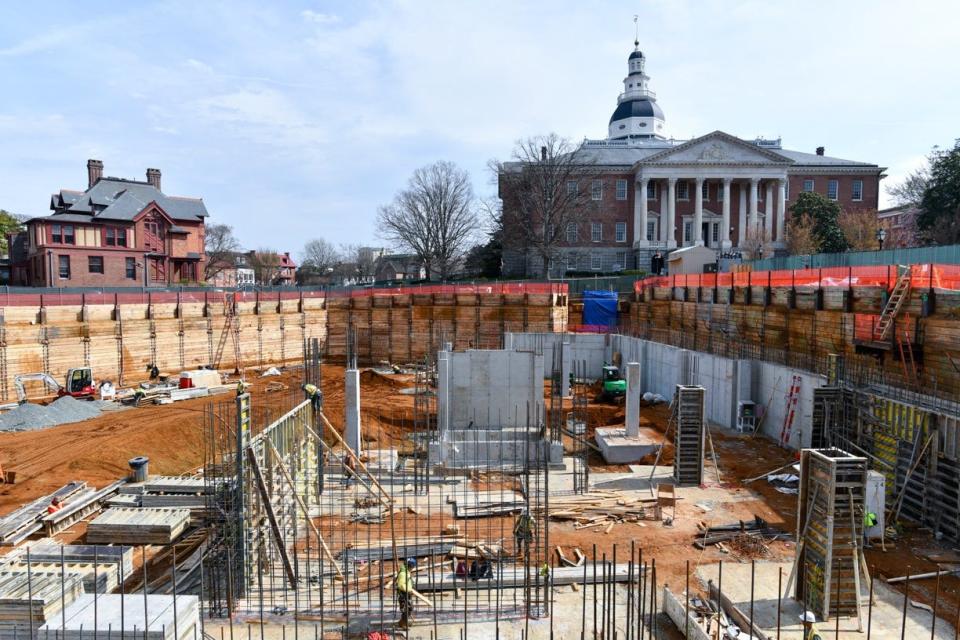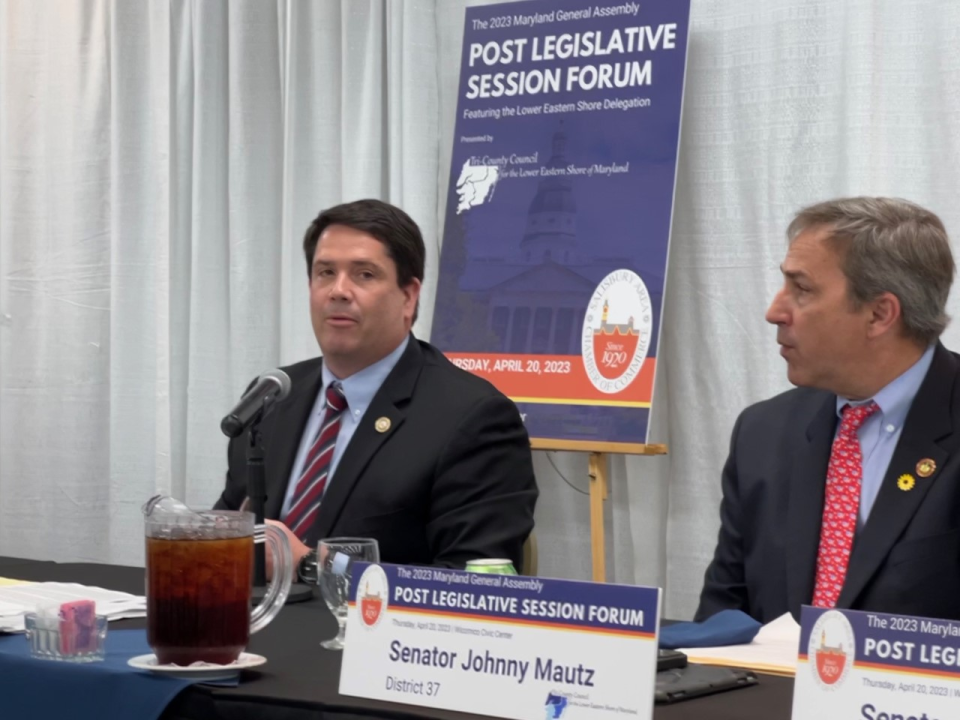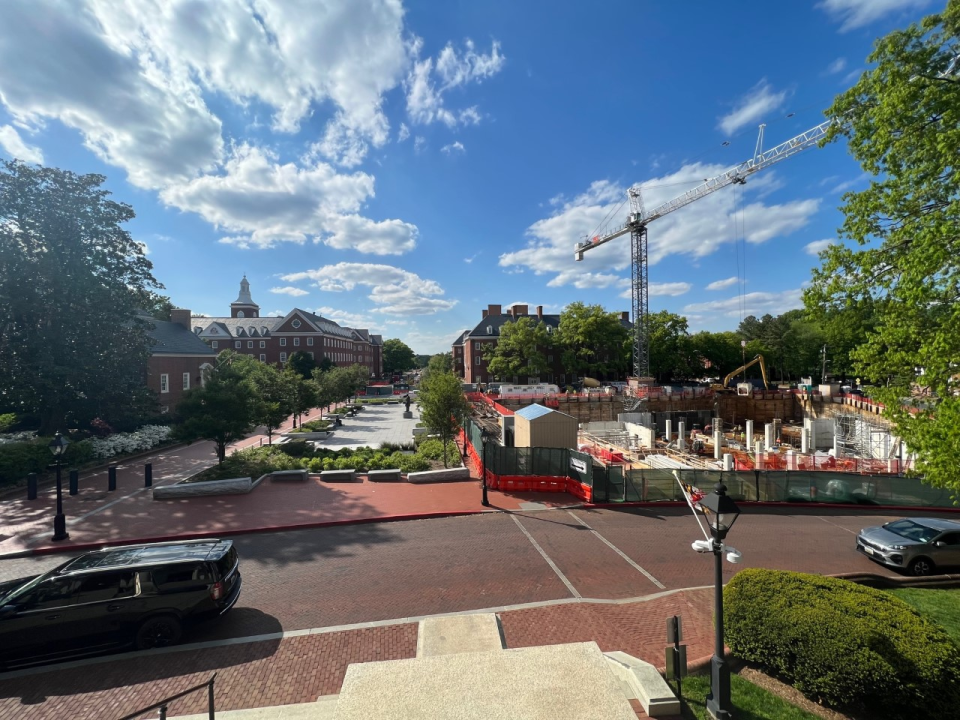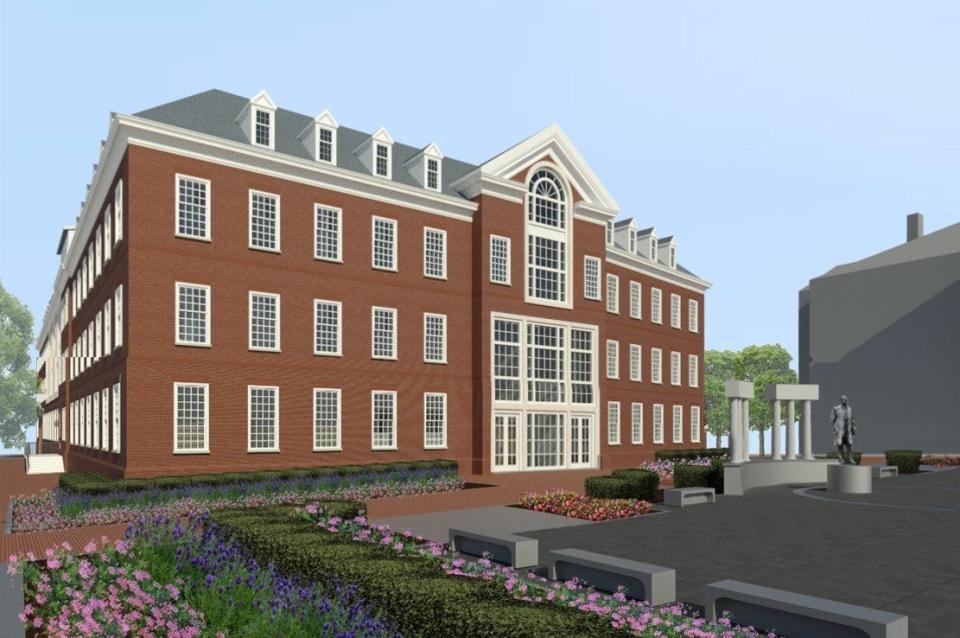Who really writes Maryland's big bills? 'The best-kept secret in Annapolis'
The first-year lawmaker arrived in Annapolis thinking that she would be doing a lot of writing.
“I remember being at freshman orientation and somehow in my mind, I had envisioned as a lawmaker, writing a bill meant like writing a paper for college,” said Del. Brooke Grossman, D-Washington. “I was imagining writing 50-page papers all the time."
But a lightbulb went off when she found out about the bill writers: the staff of the Department of Legislative Services, described by legislators as the “go-to,” the “backbone,” and the “support system” of the Maryland General Assembly. In her words: “the best kept secret in Annapolis.”
Legislators used to walk from their offices through tunnels in the Department of Legislative Services building to get to the State House. It’s fitting, as much of the “people’s business” that the lawmakers enact is as a result of the unseen efforts of the roughly 400-person department.
A team of 27 drafted each of the Legislature’s 2,000-plus bills this year, and a squad of similar size wrote fiscal notes analyzing the economic effect of every piece of legislation that had a hearing.
Federal contractors database: See diversity hiring stats for thousands of companies
The department also provides the human resource services for the legislators and their staff as well as maintaining the technology, including video streaming, to keep the legislative process going, transparent and open to the public. For the past year, however, the department has been without a headquarters while its staff have been cloistered away in sometimes makeshift corner offices around the state capital.
Now, in lieu of the building and tunnels that lawmakers once walked through, there’s a hole. A big one. And for all the pageantry of the inauguration of Wes Moore, the event, attended by A-List celebrities, took place next to a construction site. The governor and his family now live in a house not more than a football's throw from the lot.

The old home of the Department of Legislative Services also near the State House was torn down last June. The new building, budgeted this year for over $41 million and managed by the Maryland Stadium Authority, is set to be finished in the same location after next year’s legislative session, in December 2024.
Yet, for all the sights of construction, it is the building of the legislative process that may be most noteworthy.
“The Department of Legislative Services is our go to,” said Del. Chris Adams, R-Wicomico, in an April 20 interview before a Post Legislative Session Forum in Salisbury. “It is our place for information to ask when we need help to understand what a bill’s going to do.”

“They are, for us, the tool that helps us become better,” said Adams, the chair of the Eastern Shore delegation to the Maryland General Assembly. “DLS helps us become better legislators.”
Where the work got done this year
This year, the department’s work took place in a historic home, the Shaw House on State Circle, as well as spread across the various office buildings near the nation’s oldest state house still used for legislative purposes.
“We’re all over the place,” said DJ Lissau, the department’s manager of administration, who’s overseeing the new building project and has run the mailroom and print shop for the legislators. He has an office tucked away in the corner of the fourth floor of the Miller Senate Office building with a screen showing the pit of the building project down below.
The old building, originally constructed in the 1970s, had a cracked foundation, sewage pipes which burst into the legislative library, and flooding in the department’s IT office.
“The building was in such bad shape,” Lissau said, “I was just chasing problems.”

Lissau’s supervisor, Vicki Gruber, has been the executive director of the Department of Legislative Services since 2018.
“Our primary role is to support the General Assembly,” said Gruber, who served as chief of staff to Maryland Senate President Thomas V. "Mike" Miller from 2007 through 2017 after working as a policy analyst at DLS for seven years prior.
She describes several components of the organization that she oversees, from the Office of Operations and Support Services, to the Office of Policy Analysis, to an Office of Program Evaluation and Government Accountability. A separate DLS office, which conducts legislative audits, houses many of its 100-plus members in the Warehouse at Camden Yards in Baltimore.

Sen. Paul Corderman, R-Washington/Frederick, who served as a state delegate from 2017 to 2020, recalls the old Department of Legislative Services building with its joint committee conference room.
This year, the House Appropriations Committee and Senate Budget and Tax Committee, on which Corderman serves, crowded into a House Office Building hearing room for a conference to decide the state’s budget. The new building is set to have a joint hearing room with dozens of seats both for legislators and the public who may attend to watch the process or testify on a bill.
Bill drafting, a new building, and the ‘backbone’ of the state Legislature
As far as the bill drafting service that brought about Grossman’s lightbulb moment, Gruber said requests are confidential and that lawmakers have an electronic mechanism to request a bill.
“(Lawmakers) just simply request that the bill be drafted,” she said, describing a process that typically begins in the late summer or early fall after all laws from the previous session have been incorporated into statute.
This past year, with elections for all the state’s 188 legislators, that process couldn’t begin for some until after November.
“It’s a big crunch,” said Gruber, alluding to February deadlines for lawmakers in the House and Senate to introduce legislation for consideration.
She said the rush of bill requests always seems to happen right around Super Bowl Sunday.
“This 90 days, the General Assembly, they gets things done,” she said. “It’s not like Capitol Hill where things seem to go on and on without any resolution.”

As of May 4, Democratic Gov. Wes Moore had signed several hundred bills from the session into law. Behind each one was work from the Department of Legislative Services staff, not to mention the countless fiscal notes and unpassed bills, which did not cross the finish line this year.
“We have an extensive review process, proofreading, editing,” Gruber said. “If there is any questions about the legislation, what exactly the member is intending to do or how it might work, (staff will) reach out to the member and get the information.”
Corderman, who was the primary sponsor of a dozen bills this session, called the department “the backbone of the state Legislature.” He said the new building will help both the department and legislators from “an efficiency standpoint.”

“Once that facility is rebuilt, it will just provide a stronger support system for the General Assembly,” said Corderman, during an interview after a post legislative forum held at Hagerstown Community College on May 3.
In a phone interview, Gruber said the building project is “on time,” and she expects the department to move in December 2024 after next year's session.
Dwight A. Weingarten is an investigative reporter, covering the Maryland State House and state issues. He can be reached at dweingarten@gannett.com or on Twitter at @DwightWeingart2.
This article originally appeared on The Herald-Mail: Who writes Maryland's big bills? Meet department that makes it happen

